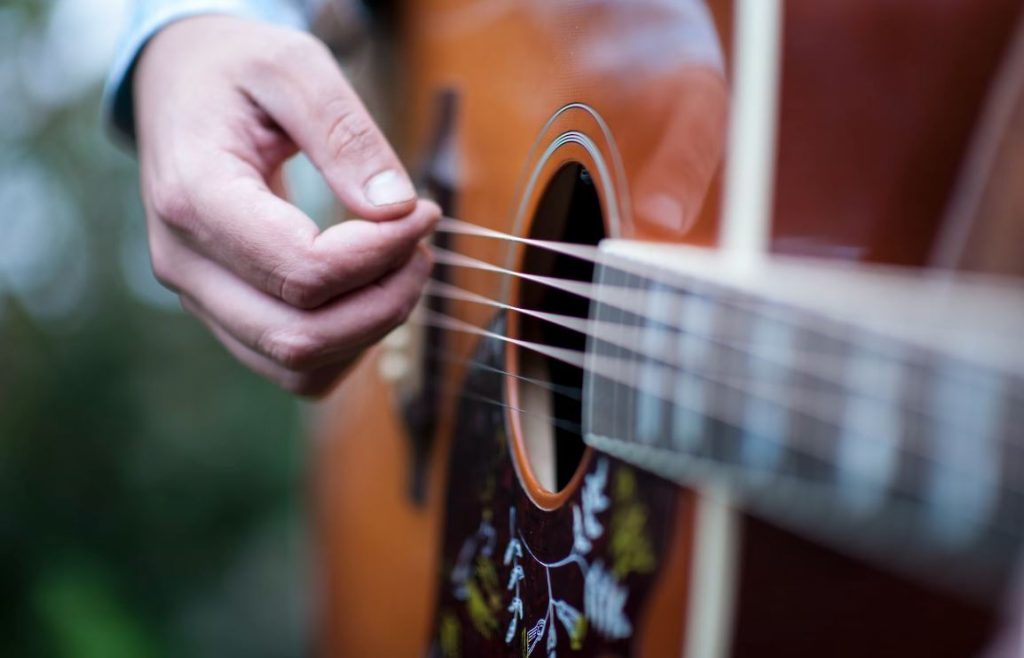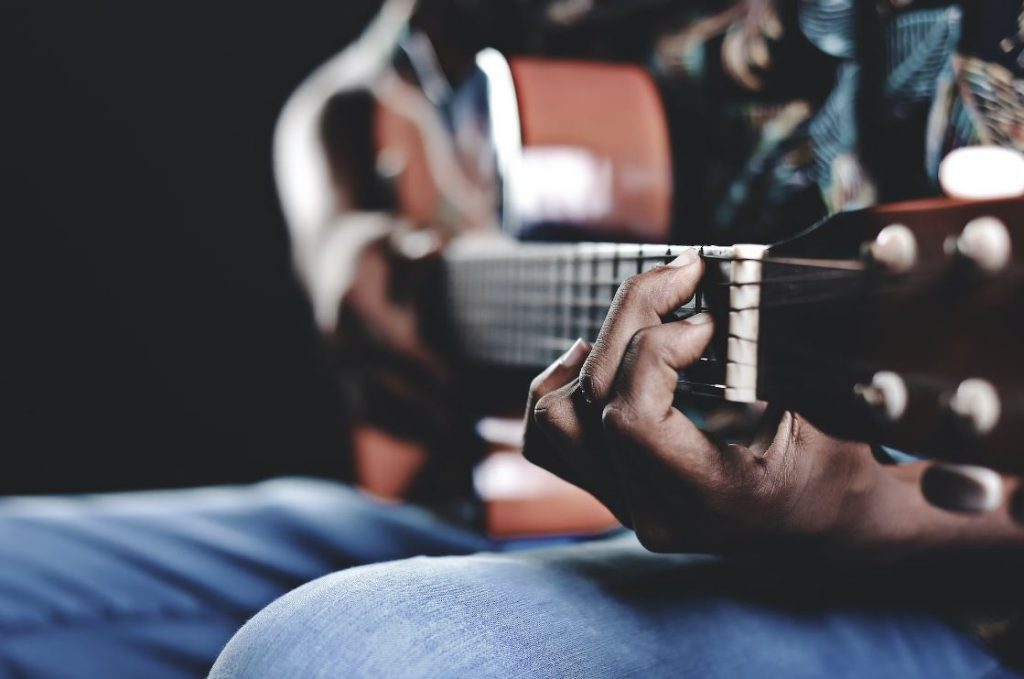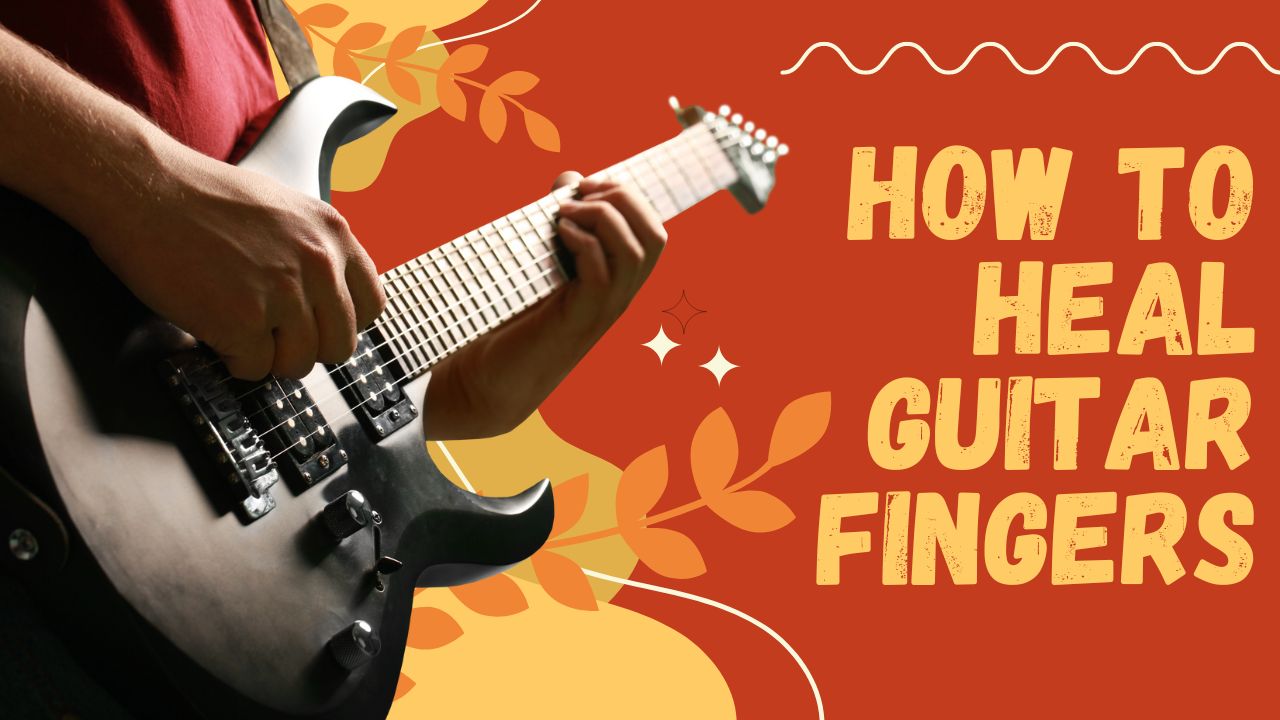This product list contains affiliate links. This means that at no extra cost to you, I may earn a commission if you use one of these links to make a purchase.
Last updated on August 31st, 2023 at 10:52 am
In fact, healing guitar fingers is an essential part of staying at the top of my game. Whether you’re an amateur or a professional player, finger pain and injury can be a hindrance to your playing experience. That’s why I’m excited to share my insights on how to heal guitar fingers effectively.
Healing guitar fingers is multifaceted – it involves a combination of prevention, treatment, and recovery strategies. In this article, I’ll provide you with a comprehensive guide on how to heal guitar fingers. From understanding finger pain and injury to effective exercises and stretches, quick remedies, and best practices for healing guitar-related finger pain, I’ll cover everything you need to know to keep your fingers healthy and pain-free.
With these tips, you’ll find the relief and healing you need to produce beautiful music without the burden of finger pain. Keep reading to learn the best practices for healing guitar fingers and achieving optimal playing experience.
Key Takeaways
- 🎸Understanding the cause and prevention of finger injuries while playing guitar is crucial. Common issues include overuse and strains leading to conditions like tendinitis and carpal tunnel syndrome.
- 🏋♀ Simple warm-up exercises and targeted techniques such as finger rolls and grip squeezes can aid in preventing these injuries. Incorporating finger strengthening exercises like finger tapping, spider walks, and chord changes can mitigate pain.
- 🔥Applying remedies like ice or heat, using over-the-counter creams, and giving your fingers ample rest can alleviate pain, especially after a lengthy practice session.
- 🎵Maintaining proper hand positioning, adjusting your guitar setup, and having a balanced practice routine can drastically reduce finger discomfort and prevent future injuries.
- 🏥When persistent or severe finger pain is experienced, seeking medical attention should be a priority to deal with the underlying issues professionally and provide treatment for healing effectively.
Understanding How to Heal Guitar Fingers: Pain and Injury

It’s common to experience finger pain and injuries. This can range from mild discomfort to more severe conditions like tendonitis. Understanding the causes of these issues and how to prevent and treat them is essential for any guitarist looking to maintain their playing ability.
Common Finger Pain and Injuries
The most common finger injuries for guitar players are caused by overuse or repetitive strain. This can lead to conditions like tendinitis, carpal tunnel syndrome, and trigger finger. In addition to these more severe conditions, guitarists may also experience general soreness and discomfort in the fingers, particularly in the beginning stages of learning.
Preventing and Treating Finger Injuries
Proper warm-up exercises are essential for preventing finger injuries. Before any practice or performance, take a few minutes to stretch and warm up your fingers. This could include simple exercises like flexing and extending your fingers, as well as more targeted techniques like finger rolls and grip squeezes.
If you do experience finger pain or injury, rest is crucial. Taking a break from playing and allowing your fingers to recover is essential for preventing further damage. If the pain persists, consider seeing a healthcare professional who specializes in treating musicians.
Finger Exercises for Guitarists
There are also many finger exercises that can help prevent and heal guitar-related finger pain. These exercises can improve finger strength, dexterity, and flexibility. Some popular exercises include finger tapping, spider walks, and chord changes. Incorporating these exercises into your practice routine can help keep your fingers healthy and reduce the risk of injury.
Overall, taking care of your fingers is essential for any serious guitar player. By understanding the common causes of finger pain and injury, and taking steps to prevent and treat them, you can maintain your playing ability and avoid long-term damage.
Also Read: Harmony Pedal Vocals: Elevate Your Singing Performance Today
Effective Exercises and Stretches: How to Heal Guitar Fingers
If you’re looking to heal your guitar fingers, incorporating finger exercises and stretches into your practice routine can make all the difference. These exercises help build strength and flexibility in your fingers, reducing the risk of injury and alleviating pain and soreness.
Here are some finger exercises and stretches that are particularly beneficial for guitar players:
- Spider Walk: Place your index finger on the first fret of the sixth string, followed by your middle finger on the second fret, ring finger on the third fret, and pinky finger on the fourth fret. Then, “walk” your fingers back down from the pinky to the index finger. Repeat on each string until you’ve covered all six.
- Hand Squeeze: Hold a tennis ball or small hand grip in one hand and squeeze it for five seconds before releasing. Repeat with the other hand. This exercise helps build strength in your fingers and wrists.
- Finger Stretches: Gently pull each finger back toward your wrist and hold the stretch for 10-15 seconds. This exercise helps improve flexibility in your fingers.
Remember to start slowly and gradually increase the intensity and duration of your finger exercises and stretches. Be patient with yourself and allow time for your fingers to adjust and improve.
Additionally, taking breaks during practice sessions and avoiding excessive playing can also help prevent finger pain and injury. Consistency is key, but so is moderation!
Also Read: What is a Ghost Note on Guitar and How to Play It
Quick Remedies: How to Heal Sore Guitar Fingers

Playing guitar can be tough on the fingers, and it’s not uncommon to experience soreness and discomfort after a long practice session or performance. Luckily, there are a few quick remedies you can try to alleviate the pain and get back to playing in no time.
Apply Ice or Heat
If you’re experiencing soreness or swelling in your fingers, applying ice or heat can help reduce inflammation and promote healing. Wrap a bag of ice or a cold pack in a thin towel and apply it to the affected area for 10-15 minutes at a time. Alternatively, use a heating pad or warm towel to apply heat to your fingers for a similar amount of time.
Try Over-the-Counter Creams
There are a number of over-the-counter creams and gels available that can help relieve finger pain and soreness. Look for products that contain ingredients like menthol, camphor, or capsaicin, which have been shown to have pain-relieving properties. Be sure to follow the instructions on the package carefully and avoid getting the cream in your eyes or other sensitive areas.
Rest Your Fingers
If your fingers are feeling particularly sore or tired, it may be a sign that you need to take a break from playing for a little while. Resting your fingers for a day or two can help give them the time they need to heal and recover. During this time, try to avoid any activities that could further aggravate your fingers, such as typing or using other hand-held devices.
By implementing these quick remedies, you can help alleviate soreness and discomfort in your guitar fingers, so you can get back to playing music without pain or discomfort.
Also Read: Fingers Bleeding from Guitar: Why It’s Not a Badge of Honor
Best Practices for Healing Finger Pain Related to Playing Guitar
If you are experiencing finger pain or discomfort while playing the guitar, there are several best practices you can follow to help heal your fingers and prevent future injuries. Here are some tips to keep in mind:
1. Proper Hand Positioning
One of the most common causes of finger pain for guitar players is improper hand positioning on the fretboard. Make sure your wrist is straight and not bent at an awkward angle, and use your fingertips to press down on the strings instead of the pads of your fingers. This will help reduce strain and pressure on your fingers and prevent injury.
2. Adjust Your Guitar Setup
Having a properly adjusted guitar can also help reduce strain on your fingers. Make sure your strings are not too high off the fretboard, as this can make it harder to press down on them and lead to finger fatigue and pain. If you’re unsure how to adjust your guitar setup, consider taking it to a professional for a tune-up.
3. Maintain a Balanced Practice Routine
While it can be tempting to practice for hours on end, it’s important to take breaks and give your fingers time to rest. Try to limit your practice sessions to 30-60 minutes at a time, and take short breaks in between to stretch and relax your hands. You can also alternate between practicing different techniques or songs to reduce strain on specific fingers.
4. Warm-Up Exercises
Before every practice session or performance, make sure to warm up your fingers with some simple stretching exercises. This can help increase flexibility and reduce the risk of injury. Try pressing your fingers against a flat surface or using a special grip strengthener to warm up your hand muscles.
5. Seek Medical Attention When Needed
If you are experiencing persistent or severe finger pain, it’s important to seek medical attention from a doctor or physical therapist. They can help diagnose the underlying cause of your pain and provide targeted exercises or treatment to help you heal.
By following these best practices, you can help heal your guitar-related finger pain and prevent future injuries. Remember to listen to your body and take breaks when needed, and don’t hesitate to seek professional help if you’re experiencing ongoing discomfort or pain.
Also Read: Finger Tape for Guitar: 5 Steps for Superior Play
Conclusion
Taking care of your fingers is crucial for an optimal playing experience. Through this article, I have shared with you the steps and tips to effectively heal and prevent finger injuries.
Remember to always warm up before playing and take breaks when needed. Incorporate the finger exercises and stretches provided in this article into your practice routine to maintain finger strength and flexibility.


